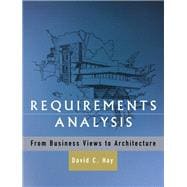
David C. Hay has been developing interactive, database-oriented systems since the days of punched cards, paper tape, and teletype machines. He is president of Essential Strategies, Inc., a Houston, Texas-based worldwide consultancy that uses modeling techniques to help construct information strategies and architectures, and defines requirements in a wide range of organizations, including pharmaceutical researchers, news-gathering and broadcasting firms, oil refiners, and government agencies.
The New copy of this book will include any supplemental materials advertised. Please check the title of the book to determine if it should include any access cards, study guides, lab manuals, CDs, etc.
The Used, Rental and eBook copies of this book are not guaranteed to include any supplemental materials. Typically, only the book itself is included. This is true even if the title states it includes any access cards, study guides, lab manuals, CDs, etc.